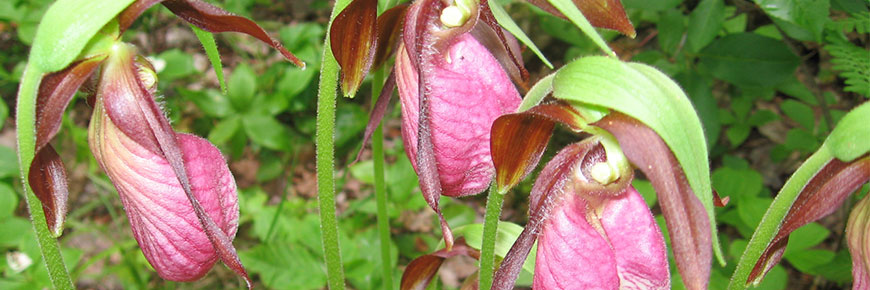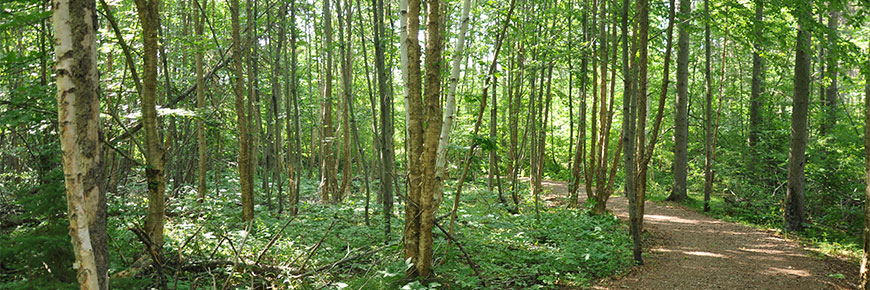
Echinacea
Plants
Prince Edward Island National Park
Wildflowers

There are over 600 species of plants identified in PEI National Park, including the provincial flower: the common Lady’s slipper.
In the coastal ecosystem you might find the beautiful purple beach pea early in the season, while marram grass, blue-green foliage of artemesia and sea rocket thrive in the harsh coastal conditions. Moving inland, roses and bayberry take hold as the sand starts to turn to soil.
Many woodland plants can be observed along the trails: mayflowers, bunchberry, starflower and violets, birds foot trefoil, clover, fireweed and bedstraw. In the fall, purple and yellow colours dominate with asters and goldenrod coming into bloom.
Trees

Today the forest is dominated by white spruce, which was the early successional species that regenerated after agricultural land use ended in the park. The main focus of the Conservation Restoration (CoRe) project in the park was on enhancing the existing forest values by using forest techniques the with lowers impact possible, and re-introducing absent tree species.
54,000 trees have been planted as part of the CoRe project, including the following:
- Red spruce (Picea rubens)
- White pine (Pinus strobus)
- Eastern hemlock (Tsuga canadensis)
- Red oak (Quercus rubra)
- Yellow birch (Betula alleghaniensis)
- Sugar maple (Acer saccharum)
- White ash (Fraxinus americana)
- Eastern larch (Larix laricina)
Coloured flags can be found throughout the park, each indicating a newly planted tree. These flags are temporary and very useful in that they allow us to easily identify new seedlings amongst the understory for ongoing monitoring and survivability.
For more information on the CoRe project, please visit: Conserving and restoring ecosystems.
Exotic invasive species

While there are many exotic invasive plant species that are present within the PEI National Park, we are currently focusing eradication and management efforts on four targeted forest species and one wetland species:
- Garlic mustard (Alliaria petiolata)
- Japanese knotweed (Fallopia japonica)
- Glossy buckthorn (Frangula alnus)
- Scotch pine (Pinus sylvestris)
- Purple loosestrife (Lythrum salicaria)
These species were decided upon based on the threat level they impose to native flora. They are all considered to have significant negative impacts on ecological integrity and warrant special attention based on the following criteria:
- They are most likely to be in areas where they could be easily introduced by visitors.
- They have the greatest potential for successful control.
- They are most likely to affect processes of native plants.
Monitoring and management targets have been set with the goal of eliminating or reducing these species and their potential to expand.
When success is met for any of these, another invasive species will be added to the list. Candidates are Norway maple, wild cucumber and Virginia creeper.
Related links
- Date modified :